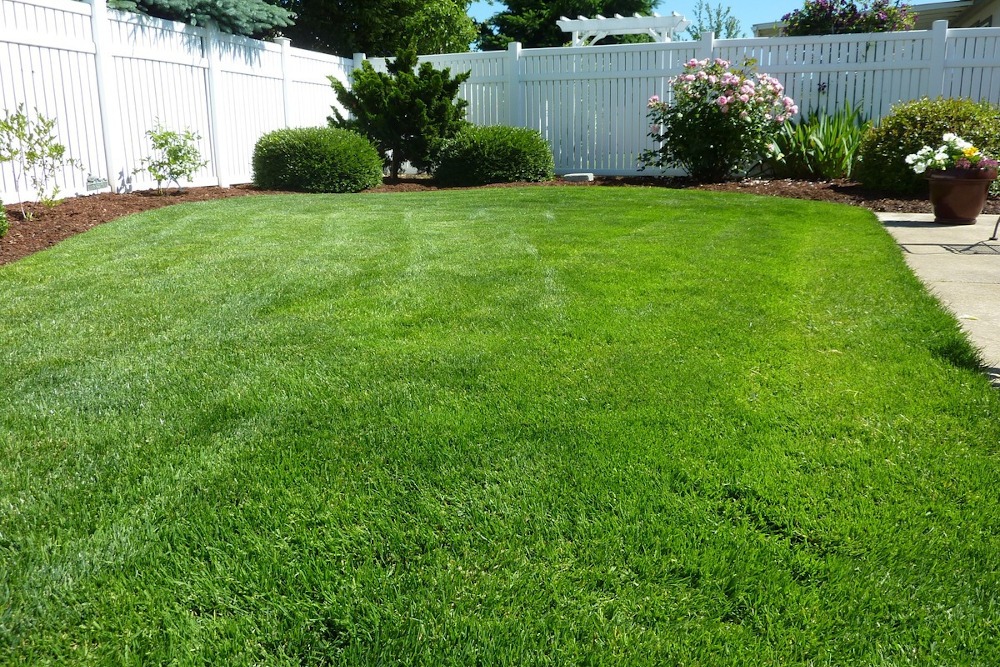Homeowners know there’s always something to do when it comes to yard work and house maintenance. With average summer temperatures in the upper 90s, spring is the best time to spruce up your Texas lawn. Along with the standard checklist — roof maintenance, painting, sealing, pool cleaning, air conditioning tune-up, and the like — take note of the yard and landscape.
Know Your Grass
The type of grass you have determines what kinds of chemicals or organic products to use. Chances are your lawn contains one or more of these blends:
- Augustine: One of the most popular types of grass in Austin, it grows fast, even in shade. This thick-bladed grass type needs watering twice a week, frequent mowing, and raking to keep thatch at bay. Plant St. Augustine in early spring from plugs or sod. Fertilize four times a year.
- Buffalograss: This hardy turf is disease-resistant and drought tolerant. It doesn’t need as much water as other blends, which makes it great for the Austin climate.
- Zoysia: Shade-tolerant Zoysia handles high foot traffic well but needs frequent watering and fertilizing.
- Bermudagrass: Although this type is mostly used on athletic fields, it’s also growing in Texas yards. Bermudagrass is disease resistant and solid in high-traffic areas,
- Ryegrass: Cool-season ryegrass helps keep turf bright and green during dry winters, but it can’t handle extreme Texas heat without getting dry and brittle. It’s good for overseeding, but not as a base grass in your lawn.
Mower Prep
Maintaining the mower is more than just pumping the tank full of gas or charging the battery. Dirty or loose plugs keep the mower from starting, and dull blades will tear the grass rather than cut it. Change the oil in your mower at least once a year or after 50 uses. Replace the air filter. Clean mowing decks and blades. Sharpen the cutting blade, or take it to a qualified dealer or hardware store for service.
Cleaning and Cutting
Before you drag your lawnmower over the grass, walk through the yard to pick up twigs, branches, dead tree limbs, weeds, and other debris. Rake up the dead grass and thatch.
For the first cut of the season, adjust the mower to the highest setting that is most suitable for the grass type. For example, a high setting is good for St. Augustine, the middle setting is best for Zoysia, and the lowest setting works for Bermudagrass. Remove only a third of the grass blade length when you mow.
Aerate
Punching small holes into the turf and soil allows air and water to reach the grass. Do this at the beginning of spring to prevent any compaction problems.
Fertilize and Weed
Fertilizing requirements depend on environmental conditions, grass species, soil type rainfall, and shade. Chemical products work faster, but organic fertilizers such as plant compost, manure, minced leaves, and grass clippings promote ecological health. Organics won’t burn the grass or damage nearby water sources. Controlling outdoor pests without harsh chemicals is also better for the environment.
Before fertilizing, test the soil to determine its pH balance, which is crucial to knowing whether your lawn can absorb the nutrients it needs. The pH scale runs from 0 to 14. A pH of 7 is neutral; anything below 7 is acidic, above 7 is alkaline. Grass thrives when pH is slightly acidic, in the 6.0 to 7.0 range. Soil testing kits are available at garden stores, online and from your local county extension office.
Pre-emergent herbicides kill annual seeds that produce weeds. In Austin, it’s a product that should be applied in late winter or early spring, when the soil is still too cold for weed seeds to sprout. By the time soil temperatures climb into the 60s, it’s too late. Spot treat and pull weeds by hand.
The city of Austin discourages combined “weed and feed” products. While convenient, they are not as effective and pollute more than other treatments.
Water
Water is essential for healthy lawns, but water conservation restrictions limit how often and when Austinites can water. For residences, hand-held hose-end sprinkling is allowed twice per week; automatic sprinklers can be run once per week. Water early in the morning for best results.
Spice up the landscape with native plants. There are hundreds of varieties of Texas natives; seek out knowledgeable local landscapers and garden personnel to guide you. Flower beds in your yard will reduce the amount of lawn you have to mow.
Jamie Coombs is a former landscape company owner whose areas of expertise include traditional and nontraditional irrigation systems, sustainable lawns and native plants.


